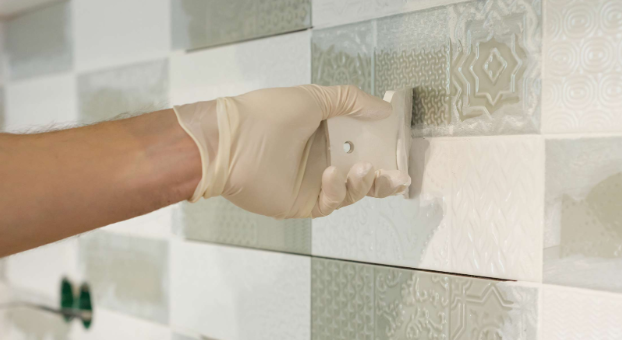
Mosaic tiles are a timeless and versatile option for enhancing the beauty of your home. Whether you’re adding a decorative backsplash, creating a stunning bathroom feature, or designing an intricate pool surround, mosaic tiles bring texture, color, and style to any space. However, one crucial factor that often gets overlooked is grout selection. Choosing the right grout for your mosaic tiles is just as important as choosing the tiles themselves. The right grout not only complements the design but also ensures the durability and longevity of your project.
In this article, we’ll explore the importance of grout, the different types of grout available, and how to choose the perfect one for your mosaic tile project.
Why Is Grout Important?
Grout serves multiple purposes when it comes to mosaic tiles. First, it fills the gaps between the tiles, ensuring a seamless and finished appearance. Second, grout helps secure the tiles in place, preventing movement or shifting over time. Finally, grout acts as a protective barrier, keeping moisture, dirt, and debris from penetrating beneath the tiles.
With mosaic tiles, which often feature intricate patterns and smaller pieces, grout plays an even more significant role in highlighting the design and maintaining the structural integrity of the installation.
Types of Grout for Mosaic Tiles
Before you can choose the right grout, it’s important to understand the different types available. Each type has distinct characteristics and is suited for specific applications:
1. Sanded Grout
-
Best for: Larger grout lines (typically over 3mm wide).
-
Sanded grout contains fine sand particles, which make it more durable and resistant to cracking. It’s ideal for mosaics with wider spaces between tiles, such as those used in outdoor or high-traffic areas.
2. Unsanded Grout
-
Best for: Narrow grout lines (less than 3mm wide).
-
Unsanded grout has a smooth texture and is perfect for delicate or highly detailed mosaic tiles. It’s often used in wall applications, such as backsplashes and shower surrounds, where the gaps between tiles are minimal.
3. Epoxy Grout
-
Best for: Areas prone to moisture, stains, or heavy use.
-
Epoxy grout is highly durable, water-resistant, and stain-resistant, making it an excellent choice for bathrooms, kitchens, and swimming pools. While it’s more expensive and slightly more difficult to work with, its long-lasting performance makes it worth the investment.
4. Pre-Mixed Grout
-
Best for: Small DIY projects.
-
Pre-mixed grout is convenient and easy to use, as it doesn’t require mixing. However, it’s typically less durable than sanded or epoxy grout, so it’s best suited for smaller or less demanding installations.
How to Choose the Right Grout for Your Mosaic Tiles
Selecting the right grout involves more than just picking a type. Here are the key factors to consider:
1. Grout Color
The color of the grout can dramatically affect the overall look of your mosaic tiles.
-
Matching Color: Choosing a grout color that matches the tiles creates a seamless, unified appearance, allowing the mosaic design to take center stage.
-
Contrasting Color: Opting for a contrasting grout color can highlight the individual tiles and enhance the pattern, making it a bold design feature.
-
Neutral Color: Neutral grout colors, such as white, gray, or beige, are versatile and work well with most mosaic designs.
Always test grout colors on a small section before committing, as lighting and tile color can affect how the grout appears.
2. Tile Size and Gap Width
The size of the mosaic tiles and the width of the gaps between them will determine whether you need sanded or unsanded grout. For intricate mosaics with tiny gaps, unsanded grout is typically the best choice. On the other hand, larger tiles or wider gaps may require sanded grout for added strength.
3. Location of Installation
Consider where the mosaic tiles will be installed:
-
Wet Areas: For bathrooms, kitchens, or pools, epoxy grout is ideal due to its water and stain resistance.
-
Dry Areas: In living rooms or bedrooms, standard sanded or unsanded grout is usually sufficient.
4. Durability Requirements
High-traffic areas or spaces exposed to frequent use will benefit from more durable grout options, such as epoxy grout. For decorative installations or areas with minimal wear and tear, standard grout may suffice.
5. Ease of Maintenance
Some grout types, like epoxy, are easier to clean and maintain because they resist stains and moisture. If you’re looking for a low-maintenance option, epoxy grout is worth considering, especially for kitchens and bathrooms.
Tips for Grouting Mosaic Tiles
Once you’ve chosen the right grout, proper application is key to achieving a professional finish. Here are a few tips:
-
Use a Grout Float: Apply the grout evenly across the mosaic tiles, ensuring the gaps are fully filled.
-
Wipe Excess Grout: Use a damp sponge to clean the surface of the tiles before the grout sets.
-
Seal the Grout: To enhance durability and prevent stains, apply a grout sealer once the grout has cured.
-
Regular Maintenance: Clean the grout periodically to keep it looking fresh and avoid grime buildup.